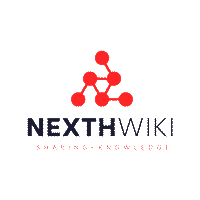Phygital Experience: Difference between revisions
| Line 19: | Line 19: | ||
Digital elements in a phygital experience incorporate various technologies to enhance the physical experience. These include: | Digital elements in a phygital experience incorporate various technologies to enhance the physical experience. These include: | ||
* | * '''Mobile Apps''': Applications that provide additional content, features, and services accessible via smartphones and tablets. | ||
* | * '''Virtual Reality (VR) and Augmented Reality (AR)''': Immersive technologies that blend virtual elements with the physical world to create new experiences. | ||
* | * '''Online Platforms''': Websites and online services that complement and extend the physical experience. | ||
== Benefits == | == Benefits == | ||
Revision as of 10:57, 14 May 2024
Phygital Experience
The Phygital Experience is a concept that combines the physical and digital worlds to create immersive and interactive experiences. The term "phygital" is derived from the fusion of "physical" and "digital," reflecting the integration of these two realms to enhance user engagement and satisfaction.
Overview
Phygital experiences are designed to bridge the gap between physical and digital interactions, allowing users to seamlessly transition between the two. This approach leverages the strengths of both worlds to provide a more engaging and comprehensive experience. In a phygital experience, digital technology enhances physical interactions, while physical elements bring tangibility to digital experiences.
Key Components
Physical Elements
Physical elements in a phygital experience include any real-world interactions that are enhanced by digital technology. This can involve:
- Tangible Interfaces: Devices or objects that users can touch and interact with, such as kiosks, augmented reality (AR) displays, and smart devices.
- Location-Based Services: Utilizing GPS, beacons, and other location technologies to provide contextually relevant information and experiences.
- In-Store Experiences: Enhancing retail environments with digital displays, interactive product demos, and personalized services.
Digital Elements
Digital elements in a phygital experience incorporate various technologies to enhance the physical experience. These include:
- Mobile Apps: Applications that provide additional content, features, and services accessible via smartphones and tablets.
- Virtual Reality (VR) and Augmented Reality (AR): Immersive technologies that blend virtual elements with the physical world to create new experiences.
- Online Platforms: Websites and online services that complement and extend the physical experience.
Benefits
Enhanced Engagement
Phygital experiences create more engaging interactions by combining the best aspects of physical and digital environments. This enhanced engagement can lead to higher customer satisfaction and loyalty.
Seamless Integration
By integrating physical and digital elements, phygital experiences provide a seamless user journey, allowing individuals to move fluidly between online and offline interactions.
Personalization
Phygital experiences can be highly personalized, leveraging data from both physical and digital interactions to provide tailored content and services that meet the unique needs of each user.
Applications
Phygital experiences can be applied across various industries, including:
- Retail: Enhancing the shopping experience with digital kiosks, interactive displays, and personalized recommendations.
- Entertainment: Combining live events with digital content, such as AR-enhanced concerts and interactive exhibits.
- Education: Integrating digital tools with classroom activities to create interactive and immersive learning experiences.
- Healthcare: Using digital technologies to enhance patient care, such as virtual consultations and remote monitoring.
Conclusion
The phygital experience represents a significant evolution in how we interact with the world around us, blending physical and digital elements to create more engaging, seamless, and personalized experiences. As technology continues to advance, the possibilities for phygital experiences will expand, offering new opportunities for innovation and engagement across various sectors.
For more information, visit Nexth.one.
